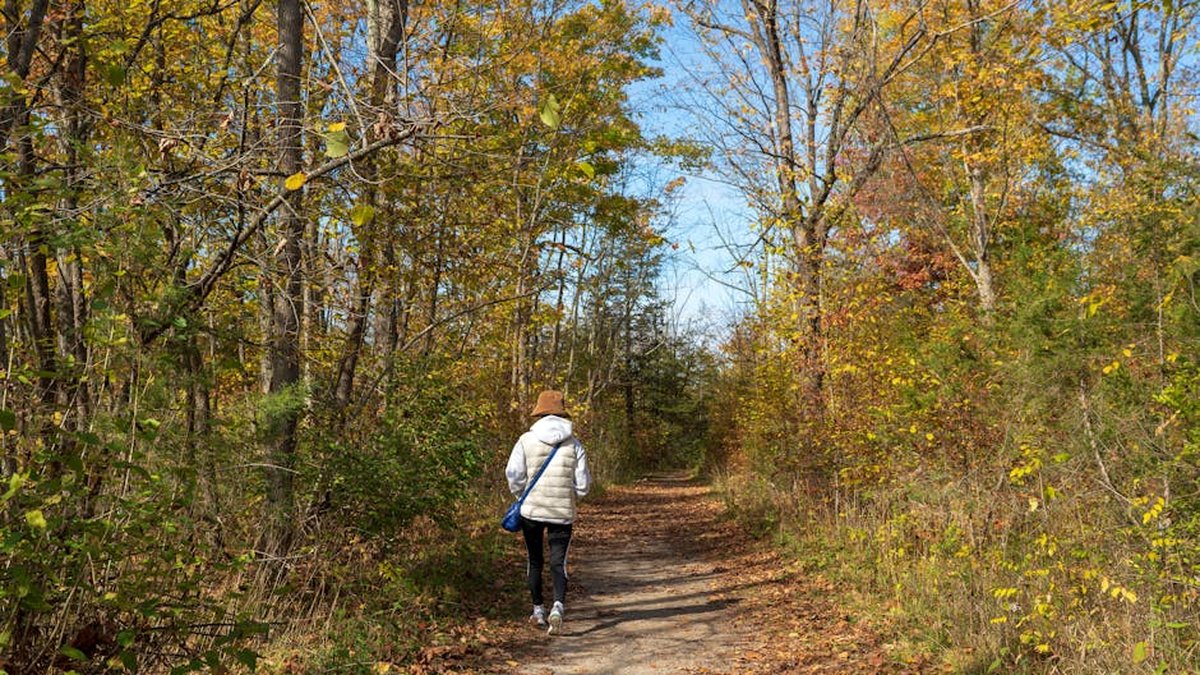Fall Foliage Fitness: Outdoor Hiking and Trail Running Safety Guide (2025)
The crisp air, vibrant colors, and stunning landscapes make fall the perfect time for outdoor fitness. Hiking and trail running become even more appealing when surrounded by nature’s breathtaking display of autumn foliage. However, the changing season also presents unique challenges. This guide provides essential safety tips to ensure your fall foliage fitness adventures are enjoyable and injury-free in 2025.
Preparing for Your Fall Foliage Adventure
Check the Weather Forecast
Fall weather can be unpredictable. Temperatures can fluctuate dramatically throughout the day, and sudden rain showers or even early snow are possible. Before heading out, check the weather forecast and be prepared for a range of conditions. Pay attention to:
- Temperature highs and lows
- Wind speed
- Precipitation chances
- Sunrise and sunset times
Plan Your Route and Tell Someone
Choose a trail that matches your fitness level and experience. Research the route beforehand, noting any potential hazards or challenging sections. It’s crucial to inform someone of your plans, including your intended route, estimated return time, and who to contact if you don’t check in. Consider using a trail map and compass or a GPS device, especially on unfamiliar trails.
Gear Up Appropriately
Proper gear is essential for a safe and comfortable fall foliage fitness experience. Here’s a checklist:
- Layered Clothing: Dress in layers to adapt to changing temperatures. Start with a moisture-wicking base layer, add an insulating mid-layer (fleece or down), and finish with a waterproof and windproof outer layer.
- Hiking Shoes or Trail Runners: Choose footwear with good traction and ankle support. Make sure they are broken in to prevent blisters.
- Backpack: Carry essential supplies in a comfortable backpack.
- Water and Snacks: Stay hydrated and energized with plenty of water and high-energy snacks.
- Headlamp or Flashlight: Daylight hours are shorter in the fall, so bring a light source, even if you plan to be back before dark.
- First-Aid Kit: Include essentials like bandages, antiseptic wipes, pain relievers, and blister treatment.
- Navigation Tools: Map, compass, GPS device, and a fully charged phone.
- Sunscreen and Insect Repellent: Even on cloudy days, sun protection is important. Ticks are still active in the fall, so use insect repellent.
Staying Safe on the Trail
Be Aware of Your Surroundings
Pay attention to the trail conditions and potential hazards. Watch out for:
- Slippery Leaves: Fallen leaves can make trails slippery, especially on slopes. Reduce your speed and be cautious on descents.
- Hidden Obstacles: Leaves can obscure rocks, roots, and other obstacles. Watch your step and use trekking poles for added stability.
- Wildlife: Be aware of local wildlife, such as bears, deer, and snakes. Make noise to avoid startling animals and carry bear spray if necessary.
- Changing Weather: Keep an eye on the sky and be prepared for sudden changes in weather. If a storm approaches, seek shelter immediately.
Pace Yourself and Stay Hydrated
Don’t push yourself too hard, especially at the beginning of your hike or run. Start slowly and gradually increase your pace. Take breaks as needed to rest and rehydrate. Drink water regularly, even if you don’t feel thirsty. Aim for at least one liter of water for every two hours of activity.
Practice Leave No Trace Principles
Respect the environment and minimize your impact by following Leave No Trace principles:
- Pack out everything you pack in.
- Stay on marked trails.
- Dispose of waste properly.
- Minimize campfire impacts.
- Respect wildlife.
Common Fall Hiking and Trail Running Injuries and Prevention
Ankle Sprains
Ankle sprains are a common injury, especially on uneven terrain. To prevent ankle sprains:
- Wear supportive footwear with good ankle support.
- Strengthen your ankles with exercises like calf raises and balance exercises.
- Be mindful of your footing and avoid running or hiking on unstable surfaces.
Knee Pain
Knee pain can be caused by overuse, improper form, or weak muscles. To prevent knee pain:
- Strengthen your leg muscles, especially your quads and hamstrings.
- Use proper running form.
- Use trekking poles to reduce stress on your knees, especially on descents.
Blisters
Blisters can be painful and debilitating. To prevent blisters:
- Wear well-fitting, broken-in shoes.
- Wear moisture-wicking socks.
- Apply blister prevention products to areas prone to blisters.
By following these safety tips, you can enjoy the beauty of fall foliage while staying safe and injury-free. Remember to prepare adequately, be aware of your surroundings, and listen to your body. Happy trails!





